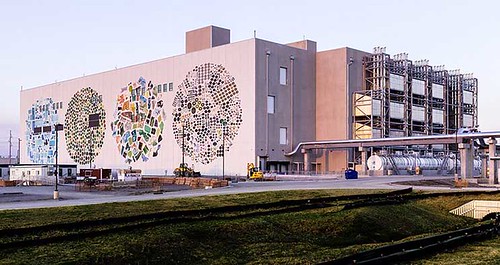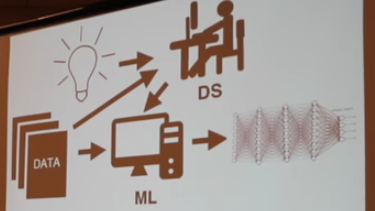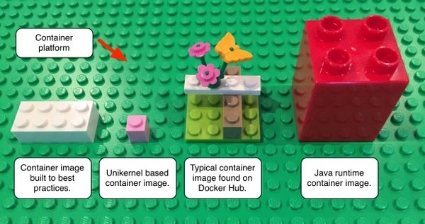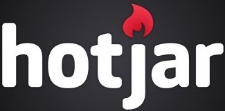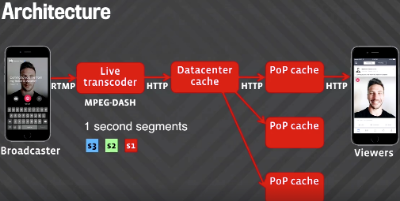Stuff The Internet Says On Scalability For July 15th, 2016
 Friday, July 15, 2016 at 8:56AM
Friday, July 15, 2016 at 8:56AM Hey, it's HighScalability time:
- <2%: percent of total U.S. electricity consumption used by data centers; $4.99: hourly wage of Amazon Turkers; 8,072: cores in Cassandra cluster; .5: new reward for slaving away in the Bitcoin mines; 11: source code for the original Apollo guidance computer; 10 inverse femtobarns: number of collisions recorded by the Large Hadron Collider; 34 bps: using MEMO to send molecular messages through the air; 200 MB: record for storage in DNA; 10,000+: 3D printed parts are used in a Rolls-Royce Phantom; $43.6bn: IaaS revenue to triple by 2020;
- Quotable Quotes:
- @PokemonGoApp: To ensure all Trainers can experience #PokemonGo, we continue to add new resources to accommodate everyone. Thank you for your patience.
- @balajis: Pokemon Go is a classic overnight success, 10 years in the making. Ingress database, Google Maps, the Pokemon brand…
- @avantgame: The math of Pokemon Go is pretty amazing. 21 million players in ONE week, playing 43 minutes on average a day.
- @icecrime: Does Pokemon Go have generics?
- @HarvardBiz: When companies start scaling, they often start seeing the future as a threat
- Jakob Engblom: for the best performance, you want to break the design apart across cut-points with the lowest level of communication across the cut.
- @peterpur: once again, it becomes obvious that complexity feeds itself, while simplicity needs conscious effort & hard work.
- @jamesurquhart: Mine is already a microservice because it runs on a microcomputer. Right? Right?
- Facebook: In our experience, every time we add a new tool, we are surprised that we managed without it.
- @petecordell: Telling a programmer there's already a library to do X is like telling a songwriter there's already a song about love
- @linclark: Code that my mom wrote 50 years ago just went up on GitHub
- @danielbryantuk: "Our monolithic application was so monolithic that we gave it a name - jimmy..." Haha, awesome! @ZalandoTech at #microservices summit
- Uri Hasson~ even across different languages, our brains show similar activity, or become “aligned,” when we hear the same idea or story.
- @etherealmind: Bidirectional forwarding detection is most significant advance in Autonomous Routing in the last 20 years.
- @aphyr: In particular, I'd like to note that @VoltDB has opted to preserve strong serializabilty as the default behavior, despite a latency cost.
- @swardley: the system is based on a cycle of theft, settlers steal from pioneers forcing them to move on ...
- Ian Adams: That the actual encoding at the CPU [for erasure coded storage] is generally not the bottleneck, but instead that the network tends to be, especially when you have really “wide” codes, e.g. 17/20 causing tons of traffic across many storage nodes for every request.
- Ayende: There is about 10% difference between fsync and fdatasync when using the HDD, but there is barely any difference as far as the SSD is concerned. This is because the SSD can do random updates (such as updating both the data and the metadata) much faster, since it doesn’t need to move the spindle.
- @cpurdy: As long as flash capacities have an order-of-magnitude advantage over RAM, flash is allowed to be slower ;-)
- @huntchr: Before you all go nuts re #serverless, #mechanicalsympathy remains important. You still need to understand what is going on under the hood.
- Gallant: These results demonstrate that dynamic brain activity measured under naturalistic conditions can be decoded using current fMRI technology.
- @sheeshee: trying to convince somebody to archive a really old CGI script roughly 1994 for archeological purposes.. old code is important for learning.
- Kreps & Kleppmann: we advocate a style of application development in which each data storage and processing component focuses on “doing one thing well”. Heterogeneous systems can be built by composing such specialised tools through the simple, general-purpose interface of a log.
- This is how you know you are Facebook. Instead of testing your new mobile software on one device you have a datacenter, with a lab, with around 60 custom made rack bristling with 2000 mobile phones, all so you can test all the different combinations and permutations. The mobile device lab at the Prineville data center.
- The challenge was made. @adrianco: Let me know when you run a 1000 node Cassandra cluster on Kubernetes :-). The challenge was met. Thousand Instances of Cassandra using Kubernetes Pet Set: We deployed 1,009 minion nodes to Google Compute Engine (GCE), spread across 4 zones, running a custom version of the Kubernetes 1.3 beta. We ran this demo on beta code since the demo was being set up before the 1.3 release date. For the minion nodes, GCE virtual machine n1-standard-8 machine size was chosen, which is vm with 8 virtual CPUs and 30GB of memory. It would allow for a single instance of Cassandra to run on one node, which is recommended for disk I/O.
- Lures from Pokemon Go have turned out to be amazingly effective. Pokemon Go Is Driving Insane Amounts of Sales at Small Local Businesses. Here's How It Works. Building that kind of native business model driver deep into the game mechanics is the real trick of the game. Also, How the gurus behind Google Earth created 'Pokémon Go'.
Don't miss all that the Internet has to say on Scalability, click below and become eventually consistent with all scalability knowledge (which means this post has many more items to read so please keep on reading)...
















